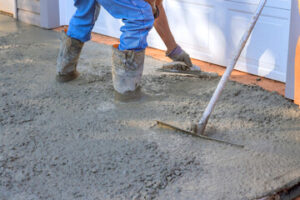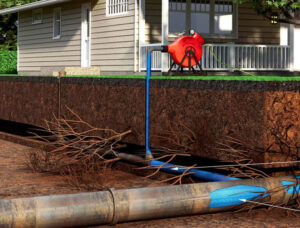Utah Water Damage can ruin everything from furniture and household items to the very structure of a building. Unaddressed, it leads to hefty repair costs and safety hazards.

Look for signs of water intrusion, such as discoloration or a musty odor. Also pay attention to paint that’s peeling or bubbling, which indicates excess moisture under the surface.
Most people have important documents, such as legal contracts, birth certificates and other personal information, that need to be stored properly. Unfortunately, these items are highly susceptible to water damage. The ink may run, the paper may warp and the information can be rendered unreadable. These documents may be vital for proving identity, conducting financial transactions and settling legal matters. If they are not properly preserved, they can be lost forever.
In addition to making the documents illegible, the water damage can also lead to mould growth and mildew. If the mould and mildew are not promptly removed, they can spread to other areas of the home. This can destroy other belongings, cause health issues and potentially create an unsafe living environment for residents.
Water damage can also cause irreparable damage to electronics and appliances, leading to costly repairs, electrical hazards and other serious problems. It’s important to address any potential issues as soon as possible, especially if they involve electronic devices and appliances, in order to protect your valuable belongings and ensure safety.
Whether it’s from a flood, burst pipe or sprinkler system, water damage can cause a lot of trouble for your business. It can affect everything from structural integrity to office equipment and the loss of vital documents. Professional document restoration specialists can help you retrieve these important materials.
The first step in addressing water damage is drying the affected items. The best approach is to place absorbent material, such as blotting paper or plain, unprinted newsprint, under or between the sheets of wet paper and allowing them to air dry. You can also use fans to promote air circulation and speed up the process.
To prevent water damage to your valuable papers and books, make sure they are stored in a cool, dark place and out of the reach of moisture sources like pipes. Also consider air-tight storage containers and acid-free archival sleeves for sensitive items. It’s also a good idea to periodically examine your building envelope and the surrounding area for potential issues that could result in water damage during severe weather.
Sentimental Items
Whether it’s family photographs, children’s art, or heirlooms passed down through generations, personal belongings are among the most valued victims of water damage. Items of sentimental value can be irreparably damaged by water and may be beyond salvage, leading to emotional distress and financial loss. However, understanding what gets ruined by water damage and taking prompt action can greatly increase your chances of salvaging important belongings and maintaining their safety and integrity over time.
Important documents, such as birth certificates, passports, and legal contracts, are particularly susceptible to damage from water. The ink can smudge, the paper can warp, and the information may become unreadable, hindering your ability to prove your identity or complete important financial transactions. Water damage can also destroy cherished photographs and handwritten letters, leaving you with nothing but memories and potential headaches.
Sentimental items, like furniture and upholstery, are also at risk of being permanently damaged by water. If left in a damp state for two days or more, these items will begin the molding process and lose their structural integrity. To avoid this, you should move furniture to a dry area as soon as possible and keep it away from sources of moisture.
Electronics are another item that is highly susceptible to water damage. If left untreated, it can lead to short circuits, corrosion, and faulty functionality. It’s best to remove any electronics from the affected area immediately and seek professional assistance to help ensure that these devices can be saved.
Water-damaged drywall, flooring, and ceilings are often unsightly and pose a safety hazard for the property’s occupants. Not only do ruined walls and floors look worse than their original condition, but they can also create mold and other health problems. This is because excess moisture provides the ideal breeding ground for harmful microorganisms.
Not only does proper water mitigation limit these risks, but it can also help prevent the damage from reoccurring and further harming the property’s structure. As such, it’s crucial that homeowners and business owners understand the long-term effects of water damage, so they can take the necessary steps to protect their property.
Pest Infestations
Water damage is more than just a nuisance, it can also attract pests. Pests such as rats, roaches, and termites thrive in damp environments. They can steal and pollute exposed food, create unsightly messes, and even trigger illnesses in humans. Untreated water damage turns a home or business into a five-star resort for pests, so it’s vital to address any issues quickly.
Signs of pest infestation can be difficult to identify because they are not always obvious. However, keeping an eye out for signs of pest activity can help homeowners and property managers identify when it’s time to call a professional.
One of the most common indicators that there’s a pest problem is the presence of droppings or chewed materials in hard-to-reach areas such as attics and crawl spaces. Similarly, observing the appearance of nests in corners, near light fixtures or ceiling fans is another surefire way to know that there’s a pest problem. In addition, hearing scratching or scurrying noises at night is a sure sign that rodents are active in the area.
Water staining and discoloration on walls and floors are also telltale signs of an underlying plumbing issue. This is because stains occur when water leaks onto cellulosic materials such as paper on drywall, which can eventually cause weakening and mold growth if left untreated. Likewise, a musty odor that’s persistent in certain areas of the home is a clear indicator that there’s a mold problem, as well as an underlying issue that needs to be addressed immediately.
Other visible signs of a pest problem include moisture-related issues like warped or buckled floors and flooring that isn’t securely attached to the subfloor. Additionally, if there are any electrical wiring problems, which can happen if the wiring is exposed to water, then that’s another indication of a pest infestation that must be addressed as soon as possible.
Aside from being a major inconvenience, pest infestations can also lead to significant structural damage to homes and businesses. Pests can gnaw through wood, causing foundational issues that threaten the structure’s integrity and safety. Additionally, pests can chew through insulation, resulting in power outages and higher energy bills.
Mold
Moisture and mold growth is one of the most dangerous consequences of untreated water damage. Mold thrives in dark, damp areas, and floors and drywall that have absorbed flood waters are prime locations. The fungi releases airborne spores that trigger allergy symptoms and sickness in sensitive individuals. These spores also contaminate food and beverages, and can taint fabrics and carpets.
Valuable possessions, such as artwork and collectibles, can be ruined by water damage. These items often have a high monetary value and hold significant sentimental value, and can be impossible or costly to replace. They can be further impacted by the effects of mold, which can tarnish precious metals and warp delicate frames. Mold can also aggravate health problems, such as allergies and respiratory issues.
The first signs of mold typically involve a musty odor, visible stains and condensation. If you notice these symptoms in your home or building, it is important to act quickly to address the issue. You should also take steps to prevent moisture buildup by fixing any leaks and conducting regular inspections.
Professional water restoration companies are the best option for remediating existing damage and preventing future problems. They have the tools to thoroughly dry and sanitize rooms with the help of industrial-grade extraction and drying equipment. They can also perform full inspections and advise homeowners and businesses on protective measures.
After water damage, it is important to take immediate action to identify and fix the moisture problem, and then thoroughly dry all affected materials. This can be done using wet/dry vacs, dehumidifiers and fans. Items/building materials that are dried within 24 hours generally do not develop mold, but porous materials (e.g. drywall, fabric and carpet) may require professional mold remediation. In addition, it is advisable to wear personal protective gear (PPE) when handling potentially hazardous substances, such as asbestos and lead-based paint. The EPA recommends consulting with a certified environmental consultant to ensure that the work is performed in accordance with safe practices and standards.




